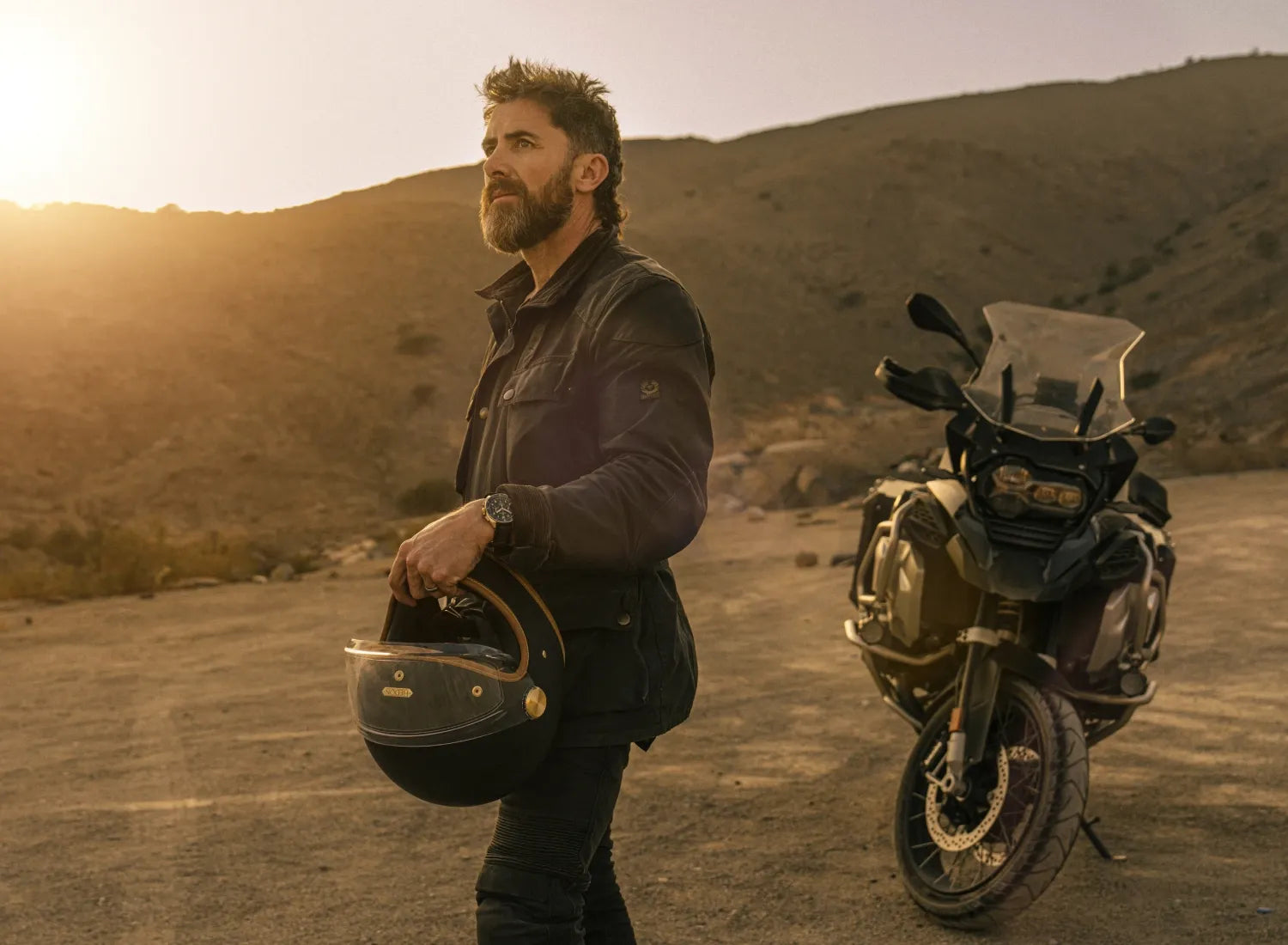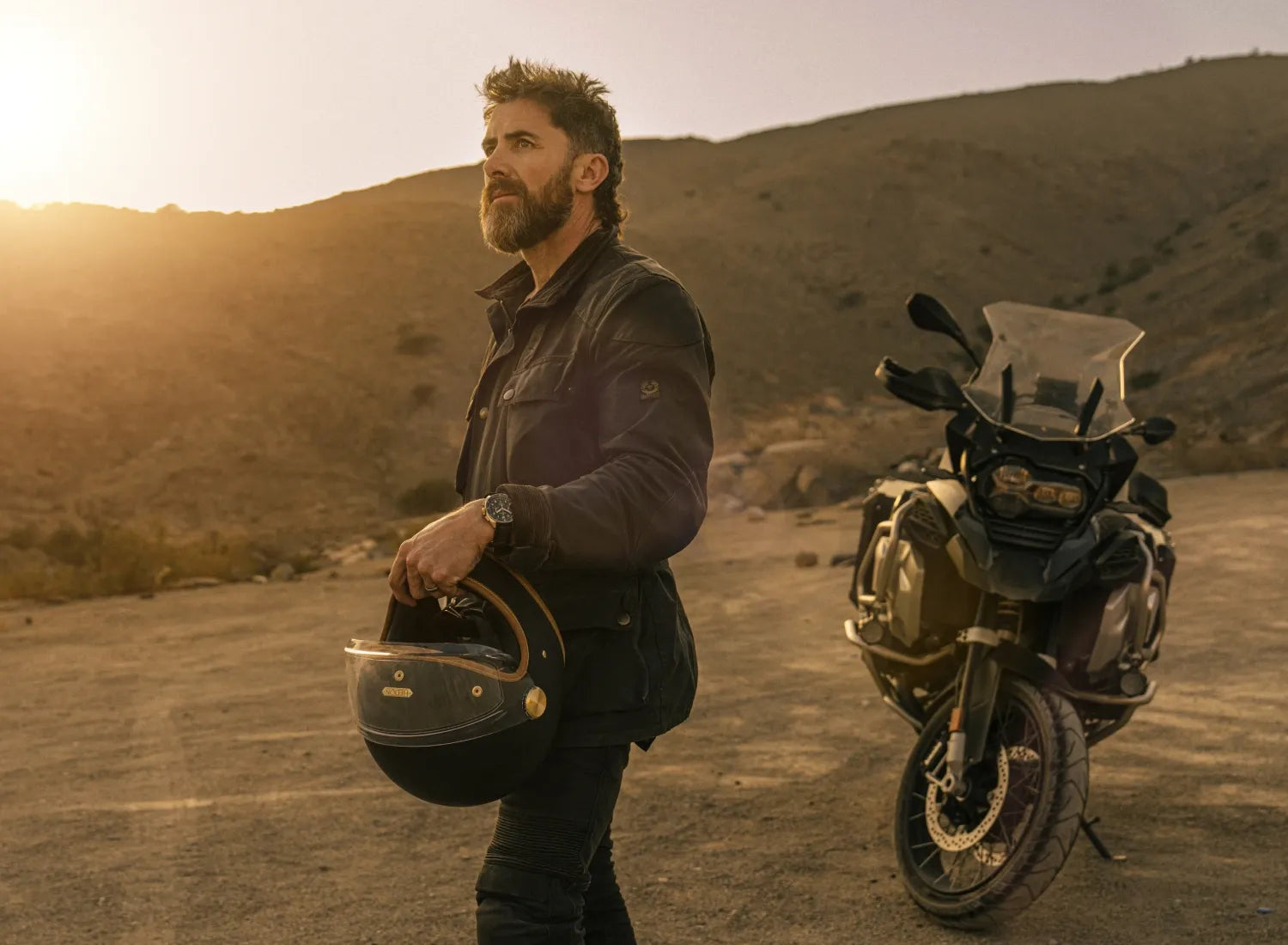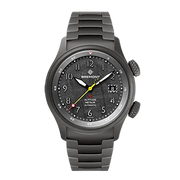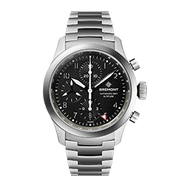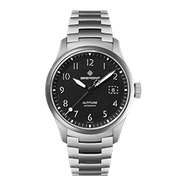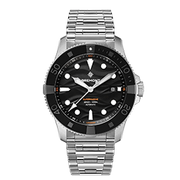In the mid-1980’s Marc found himself living in the Caribbean during the period that the global HIV/AIDS crisis was unfolding. An article sparked Marc’s interest; it predicted that the re-use of syringes would soon be the biggest contributor to HIV infections. For Marc, the article was a game changer, igniting his interest in global public health and catalysing his lifelong commitment to eradicating unsafe injections. Believing there was a product opportunity here, he spent years learning and researching, without a background in engineering or public health, about the complex challenges involved. Marc’s initial efforts led him to invent a cheaper and safer single use syringe, called the ‘K1’. 9 billion of these syringes have now been sold to UNICEF, saving millions of potentially fatal infections. During the journey, he faced a myriad of challenges both personal and commercial. Resistance ranged from dismal death threats to those trying to buy him out. Marc continued to innovate and most recently designed a new kind of syringe, using a blister technology, attaching a safe sterile needle, and creating a unique pre-filled device with a range of advantages . This technology will enable the replacement of glass vials – an outdated technology that makes transport and storage of medication challenging and poses health risks to patients due for instance to contamination from micro glass particles.
Having spent over 30 years in the field, starting as an amateur, today Marc is a recognised expert in the field. He has received honorary doctorates from Brighton University and the University of Sussex as well as multiple awards, including The Economist’s Innovation Award and the Fogarty Institute for Innovation’s Tech Award. In 2006 he was awarded the Order of the British Empire for his contribution to global healthcare.

YOU ARE CREDITED AS HAVING SAVED MILLIONS OF LIVES WITH YOUR SAFE SYRINGE TECHNOLOGY AND YOU ARE NOW PAVING THE WAY IN PANDEMIC RESPONSE TECHNOLOGY WITH THE AMERICAN GOVERNMENT. CAN YOU TELL US HOW YOU REACHED THIS POINT?
MK: 3-4 years ago, I started contemplating how much I’d really done in my career and was feeling a bit down on myself having been thrown out of my own business in which I was the biggest shareholder, Star Syringe. I made a list of all the problems that I had bypassed in trying to solve the safe injection solution. That ended up with me making a list of all the problems in the supply chain and in pandemic response believe it or not. How would we cope when there was inevitably going to be another virus unleashed on the world and a global pandemic was a racing certainty? It was just when it was going to happen, not if…
I designed a series of questions to test myself and one day I was standing in our garden where my wife keeps bees and one of our bees flew past me and I immediately realised that if we designed an injection system like insects have evolved to inject people with poison, it would solve all of the problems that I had identified in supply chain and access. Problems in the world such as only 4 out of 5 children being fully immunised for example, 1 out of 5 are never even reached which all comes down to access. It’s nothing to do with money, it’s all to do with being able to access people and there are about 20 different qualifications for that word ‘access’ (data records are a big provider of the access dynamic for example).
Within half a second of this bee flying past me I realised that what I had to do was copy bees and 3 years ago I started this new project called ApiJect which is named after the Latin for a bee, ‘apis’. Last year I sold it to US Entrepreneur, Jay Walker, and we were very shortly afterwards in communication with the American government about handling pandemic response. In November 2019, right before this coronavirus outbreak, we signed an agreement with them to build out a national pandemic response network for the US over a 5-year period. For this, they granted us special OTA (other transaction authority) funding of 456 million USD with a view to build a number of factories 'on standby', close to major hubs in America, to make my new product. This would allow the US to be able to respond immediately to any national threat to the American people. Crazy, but within 8 weeks they were calling us asking what could be done in 5 months instead of 5 years.
WHY DO YOU SUPPOSE AMERICA WAS THE QUICKEST TO ACT ON SOMETHING OF THIS NATURE?
MK: They were ready for something and had been looking for a solution like this mildly, without any urgency, for several years. My partner and I were at a conference in Kazakhstan where we met a 4-star General who was blown away at seeing our product prototype. He told us of the 8-billion-dollar strategic national stockpile of drugs, in warehouses across America, to support with anything from a terrorist attack, floods, through to a pandemic. He added that if we ever, in the future, needed to inject a drug without knowing what drug that would be (so we cannot buy it yet), be that a therapeutic or a vaccine, in response to a pandemic, we would need a very fast “fill/finish” system. This is what ApiJect provides them with, a process which is complete in 3 seconds and is entirely sterile.
A fill finish system for today would result in a new type of injection device. To be a little bit technical, the problem in the system is glass vials which package doses of injectable medicine, either in single dose format or multi dose. They are fallible in many ways, not to look at but in their function, they are the weak link. They are weak because they take months to manufacture and the world has only created a capacity for what it uses for everyday treatments, so there is no surge capacity. If we went to China now, or indeed anywhere in the world, to ask for a billion glass vials to inject everyone in Europe twice, it would be many months or years before we got supply. That has become the critical weak link in this whole supply chain. Glass has some 20 other problems, but all minor compared to access and availability. One such example is that they take about 30 times more energy to make than the system that we’ve developed so environmentally these are much better too and there’s no syringe needed with ApiJect either. ApiJect is a gamechanger.

WHAT IS THE PROCESS YOU’RE NOW IN WITH THE AMERICAN GOVERNMENT?
MK: We’ve now become involved in a 3-part delivery programme for the American government. With the support that they have granted us, they have asked for 3 different potential projects which are timed at 6 months for therapeutics to treat coronavirus symptoms, this would be palliative medicine to help you fight the condition that COVID-19 creates. The other one is a vaccine in 2 years’ time; if they make a vaccine in 2 years’ time, and of course there’s no guarantee at all that that will happen. This virus has caught us completely unprepared because it’s new, so we’ve got no experience of this one. That’s a 2-year preparation to give everyone in America 4 injections which they may need. They may need 2 doses of the vaccine and then each vaccine comes with what you call an adjuvant which is a kind of glue which helps it work in your body. If each American needs 4 injections that would equate to 1.3 billion units and our system is the only system in the world that could do this in time.
WHY CAN’T ANY OTHER SYSTEM IN THE WORLD DO IT?
MK: Firstly, there isn’t enough machinery in the world to make the glass that would be involved. Nobody thought to build extra factories around the world and just leave them sitting dormant until there was a world emergency. There is a system which I employ called blow fill seal, an amazing process invented 60 years ago in Germany, which you will have seen used in the form of little plastic capsules for eye drops for example where you twist off the top and put saline in your eye. I've invented a way of fixing a needle to one of those. Nobody had been able to do that before, they tried many times, but I’ve found a way of making that possible and especially at population scale, or in numbers so that each manufacturing line makes 500 units a minute.
Not only is there not enough spare equipment for syringes and glass vials lying around dormant, but also glass vials have other challenges such as transport. ApiJect can literally be dropped out of helicopters or drones (we’ve tested them beyond endurance!) because they are unbreakable, meaning we could deliver a pack to every house and you could self-inject. That’s the other thing, this access point that I started with is massively improved because the ApiJect product can be self-administered whereas it is illegal to self-inject using a glass vial and a syringe. The reason being, with a glass vial system you’re transferring from a vial to a syringe, and you can easily over-fill or under-fill by not being familiar with the process (reading the scale wrong for example). And of course, with ApiJect, we measure the exact dose so it could be pink for babies and blue for adults meaning you can’t make a mistake.
The other thing we’re doing, and the reason Jay Walker (the guy who bought my company) did it is because he is the world-leader for RFID Chips (this is the chip that’s in your credit card that enables contactless payments) and we’re putting one of those on every device. It’s of paramount importance to track and trace every injection that goes out. This will enable us to monitor that they are being used and people are receiving their vital injections. If we can confirm that 10,000 people in a small community have had their injection, 10 days later they should be showing herd immunity which would mean that they can go to the doctor or the emergency services could work in their midst without any danger of being infected. There are huge reasons why track and trace in this digital world is so important and probably 50% of the value of what we’re doing. It could be one of the key elements in dealing with COVID-19 – answering the question, "What has actually taken place in the population?".
CAN YOU ONLY TRACE THAT IT’S ARRIVED AND NOT THAT IT’S BEEN ADMINISTERED?
MK: What will happen is that, for various reasons, the user will tap it on their phone before they give their injection and they will register the lot number, their position, and other factors such as the weather (which is important because in Africa you want to know if people came out in the rain because they were bored and they like rain, or it was too hot and therefore they couldn’t go and get their injection). They will do it because they won’t want to be vilified for being an ‘anti-vaxxer’ or they might like to be seen as being modern because they are vaccinating and they are also going to be rewarded in some way (it could be that if you immunise your child with the full course of 14 injections we’ll give you free air time or free music etc). Equally, in the Western world if you had a chronic condition and you had to take an injection every day you might want to register that injection at a set time because your insurance company would now know that you’re a compliant patient and that would be valuable to you. There are lots of things that we think are automatic but they’re not, they’re voluntary. There are numerous examples of human compliance and Jay is probably the leading entrepreneur in human behaviour patterns.

WHAT IS THE LIKELY OUTCOME OF YOUR APIJECT INVENTION?
MK: The potential now is a global pandemic relief network if you like, or supply network. We are under pressure for creating a plan for the USA which we are pretty much getting a handle on now for the 6-month delivery. Obviously in the long term we are looking at installing this technology in every country or every continent in the world over the next 5-10 years to be able to supply solutions on that grand scale of billions.
You have got to have an intervention which is palatable for everyone, including those who don’t understand. You’ve got to have something which is easy to use. Standing apart from the current situation and problem, it’s a beautiful challenge to try and find something so simple. ApiJect will become the only way of giving mass injections within 20 years, it will rewrite the rules for everything. Any requirement for 20 million or more will use ApiJect in the future because it’s the only logical answer to all the key questions.
WILL AMERICA BE BEST PLACED TO FIGHT THIS VIRUS IF THEY’RE SET TO RECEIVE YOUR TECHNOLOGY BEFORE ANYONE ELSE?
MK: Our main contact with The Office of the Assistant Secretary for Preparedness and Response (ASPR), which sits within the Department of Health and Human Services (HHS), as of today has just received 16 billion dollars to fight coronavirus. They are being very plain and clear about this in that we are absolutely allowed to cross-pollinate to Allies with the funding and the programme that they have written. They want us to export the technology to Allies. It’s absolutely heartening that people who are working tirelessly, like we all are right now, are so open and interested in sticking to a universal application of a solution. 
HOW OFTEN DO PANDEMICS OCCUR?
MK: Pandemics seem to occur every 120 years and we’re now at 102 years since Spanish Flu, so it’s bang on time give or take a few years, but we’ll forgive nature for that. There is a plethora of people around the world who have been predicting and warning about this from lecterns around the world for decades.
I SUPPOSE YOU’RE NOT GETTING MUCH DOWNTIME DURING ISOLATION?
MK: It’s the busiest I’ve ever been. My day starts first thing in the morning with Korea because we have a factory in Korea making parts for us and it ends at midnight with the USA because they’re still working. And it’s a privilege to do it obviously, it’s a great honour to be involved in this.
HOW ARE YOU KEEPING POSITIVE?
MK: There is a way through. However along the way we are going to surely lose people who have got co-morbidity which is the phrase that is used to describe a condition that you would have died of anyway. Coronavirus attacks, your immune system jumps into action and can neglect a chronic condition which then can cause a patient's downfall. That’s an incredibly sad thing.
I keep positive because there is the opportunity for us to act in the right way and contribute. We need to develop therapeutics which are drugs that we know are going to support our co-morbid condition. We will make a vaccine at some point but remember, there is no vaccine for flu or common cold or HIV and we’ve been trying those for 40 plus years. There’s no guarantee but we’re getting some encouraging early signs.
On a personal level, there’s a reprieve in not travelling, which is rather nice because you waste so much time on aeroplanes. Being with family and having blue skies this week I’m equally grateful for.
WHAT ONE THING WOULD YOU LIKE TO SEE THAT WOULD MAKE THE WORLD A BETTER PLACE?
MK: Better parenting. If parents were to talk to their children better and gain their respect because they were treating and talking to them like proper human beings, we wouldn’t be in such a mess. Not the virus but our reaction to it! We wouldn’t have people out in the parks and playing at a time like this, I believe we would ALL be sharing the same reality and acting as one for all.
DO YOU KNOW WHAT YOUR NEXT INVENTION MIGHT BE AFTER THIS?
MK: It’s way too early to say what that next thing might be. I like to start with studying a problem, and I don’t know what the next problem is yet. I’m a firm believer that if you really understand the problem, the solution is about a minute away.
I certainly don’t plan to stop even if we had a normal world next year. I might like to move to a new house or even build a house but then I’d always come back to work and say, “right what else can I do to help?”. I think that’s why we’re here and why we’re all on the planet.
From very early on I always wanted to look for solutions and solve big problems and health and safe delivery methods of these vital injections has been my topic, and I am still surprised – making an escapement for a mechanical watch might have been a lot more fascinating!








